Travel Notes | A Journey to Know Baba and Nyonya Culture (Part 1)
Penang (Penang), also known as Penang, in the past, the intuitive impression of this city is not only the Penang Bridge across the sea, but nothing more than riding waves on the seaside, building sand on the beach, and tasting local delicacies. Another harvest, people re-understand its historical background, but also surprised at the rich colors after the fusion of multiculturalism.
The "Penang Nyonya Museum" located in George Town was once the official residence of Mr. Kapitan Zheng Jinggui, and it is also a typical residential type for a large family more than a century ago. The man is committed to preservation, and it took many years to renovate and renovate. The inside and outside of the mansion still retains the same appearance as that time. It was listed as a world cultural heritage in 2008. More than 1,000 antiques and Collection, so that later generations can also see the way of life and traditional customs of the Nyonya culture at that time.
- Baba Nyonya
Also known as Peranakans and Straits Chinese; during the Ming Dynasty, after Zheng He's voyages to the Western Ocean, people from the coastal areas of mainland China began to migrate overseas to Southeast Asia, including Malaysia. At that time, the descendants of Chinese immigrants (males) and local aborigines (females) after intermarriage were called "Baba" for men and "Nyonya" for women. - Nyonya culture <br class="smart">The special culture formed by the integration of traditional Chinese oriental culture and local aboriginal customs, and because Penang was once a British colony, it also incorporates part of the Western (British) culture, reflecting Discover the diversity and uniqueness of Baba Nyonya in terms of clothing, food, festivals, language, etc.
- Kapitan <br class="smart">At that time, Western countries implemented the "Overseas Chinese Leader System" in their colonies. "Kapitan" is a transliteration of the Dutch "Kapitein", which means "leader", which is closely related to the English language that is often spoken. Homologous to "Captain".
Note: Part of the information is referenced and organized from Internet data (Wikipedia).
"...Ah, you can take any photo inside, you can stand or sit, you can touch it, but be careful, after all, many of the exhibits here are antique-level... Let's look at the pillars of the patio and the handrails of the stairs. , all made and imported from Scotland in 1894..., because it is listed as a world cultural heritage, the entire building is Original Structure, the color of the walls can be replaced, the interior furniture can be changed, but the original structure cannot be changed..., This is Italian stained glass..."
- Hall ; the upper part of the main entrance is designed with a "hole"-like design. According to the tour guide, it was a "window to the outside world" for the young ladies who lived here to have a look at the world outside the house. Most women are not allowed to go out freely.

- Recreation room ; on the table are cards that have never been seen before, and they don't know how to play at all. The guide only said: "...cards are used as entertainment, one of the reasons for this is that it is different from mahjong. It doesn't make any noise, and it affects the men who are talking in the hall next to a wall...". "In that era when men were superior to women," the tour guide added this sentence again.
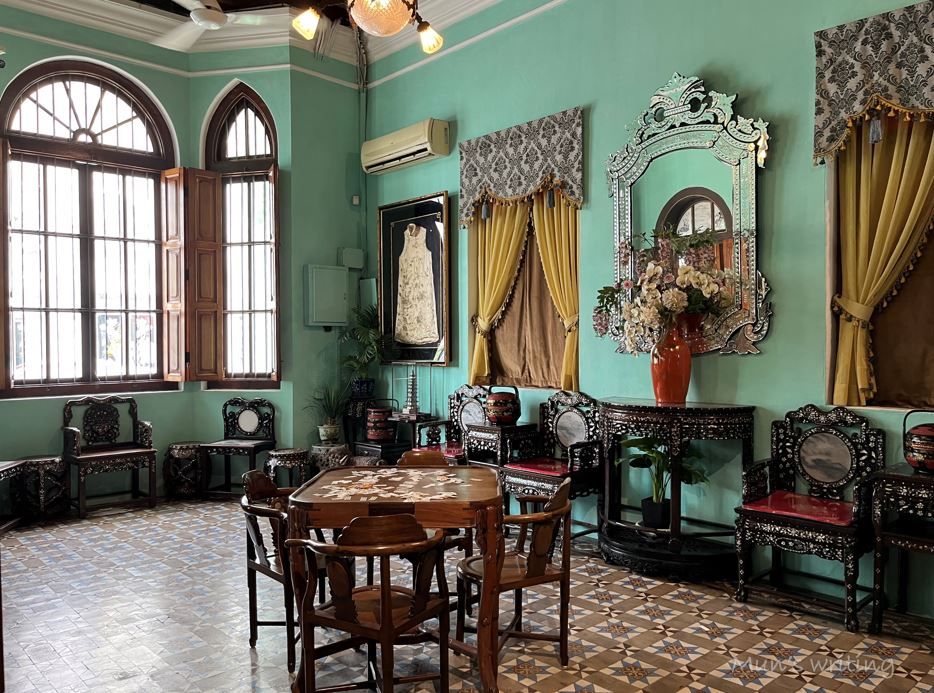
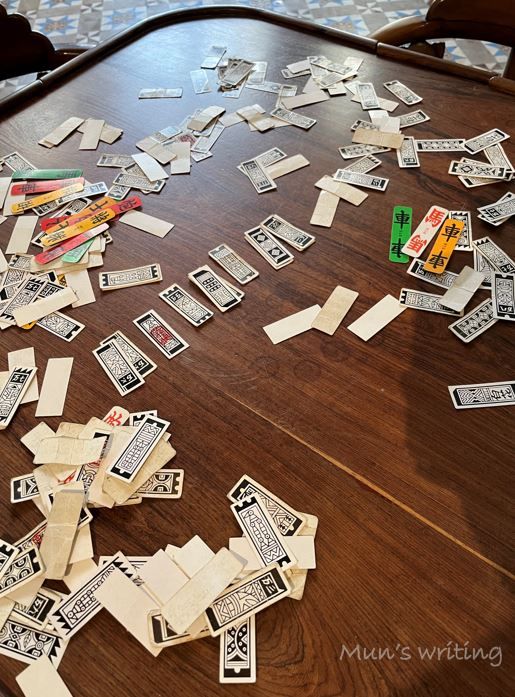

- Patio ; in the era when electrical equipment was not popular, the patio was used for ventilation and lighting.
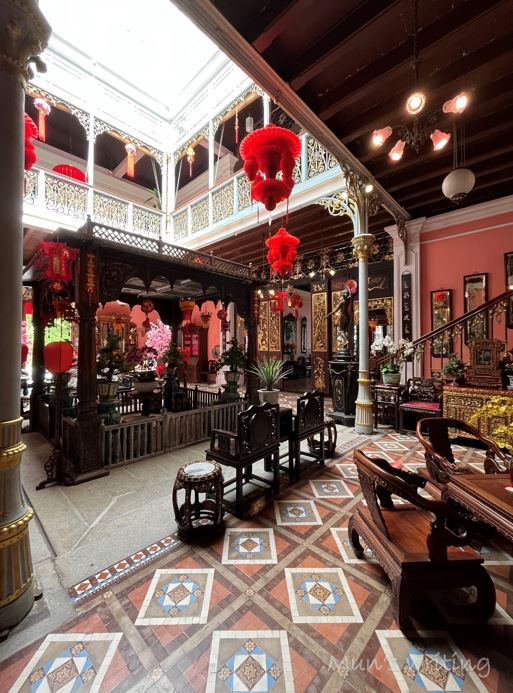
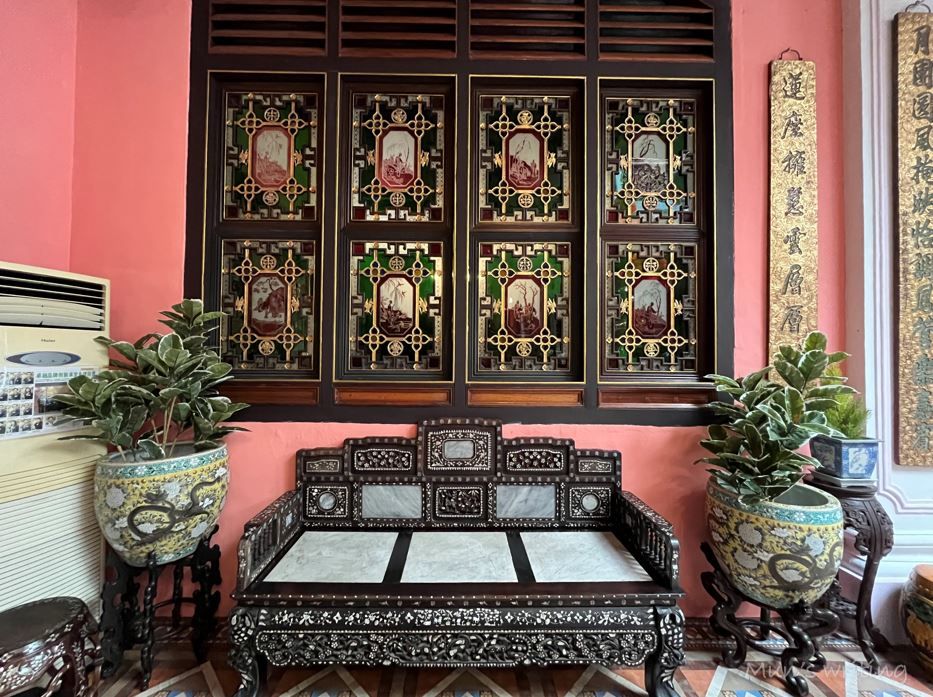
- Dining room ; the master seat of the mansion is located in the center, and the dishes and cutlery on the dining table are imitated in the West, and the arrangement of the fruit plate at the top and the bottom is the same; Pay attention to who is going in and out of the stairs, and each staircase (large stairs, rear stairs) has its corresponding user identity, for example, servants can only use the rear stairs.

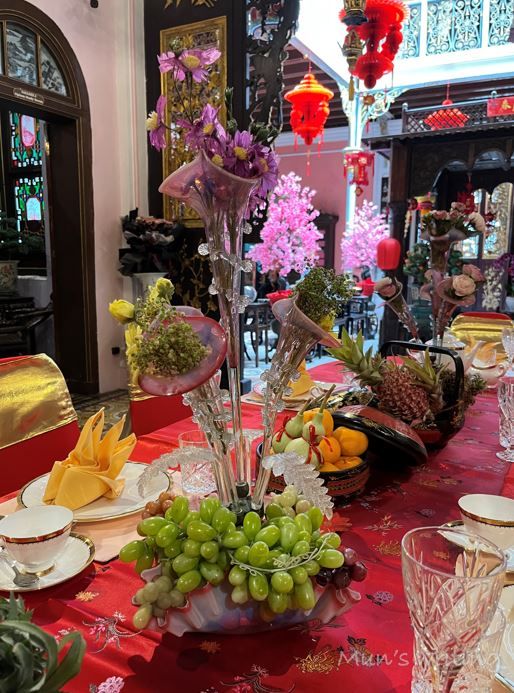
- Because Penang was once a British colony, and because there might be foreigners negotiating business in the mansion, the interior next to the dining room was renovated into a more Western-style dining room. The side room is the opium room.
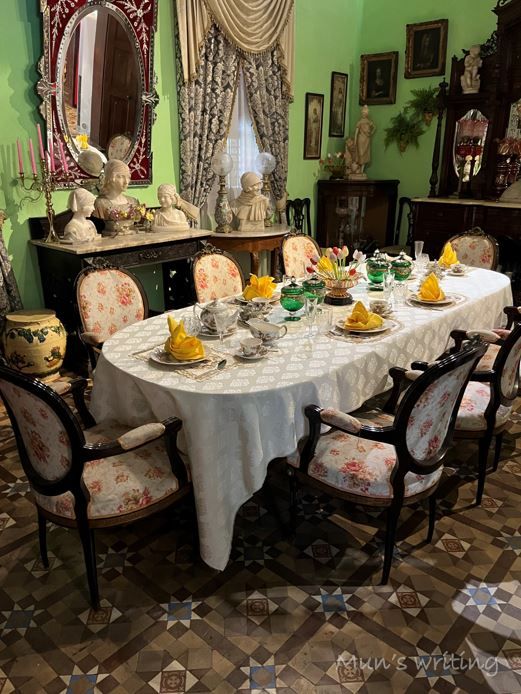
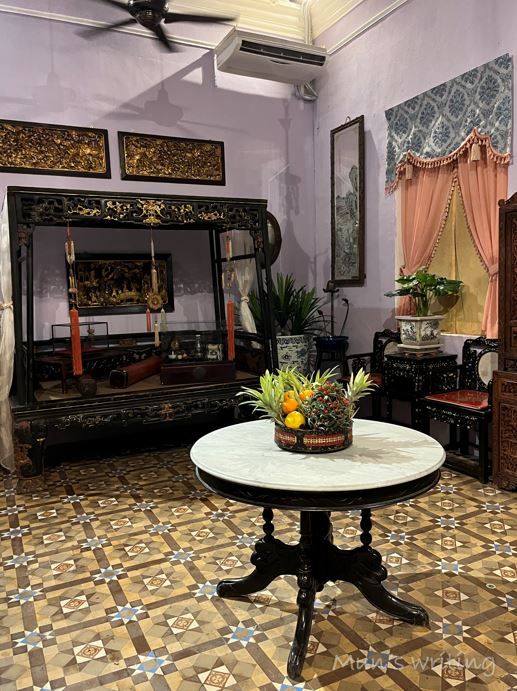
- An ancestral hall ; the male master enters through the main door, male servants enter through the side door, and women are not allowed to enter the ancestral hall; where there is a door, there must be a threshold.

Listening to the guide lady dressed in Nyonya costumes talking about the display in the museum, in addition to listening, I also reach out and touch, and try to feel the historical traces and atmosphere left here; Is it enough to describe the decoration and craftsmanship here? Right now, I just want to imagine what kind of experience I would have if I could really live in this huge house. Would I feel free and free, or would I just feel restrained?
To be continued...
Like my work? Don't forget to support and clap, let me know that you are with me on the road of creation. Keep this enthusiasm together!




- Author
- More